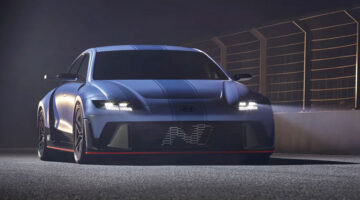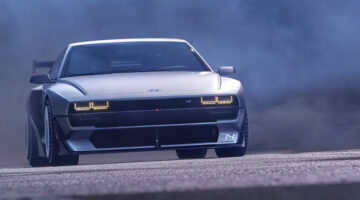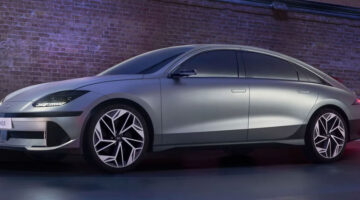We’ll start with the looks. Both our test cars are black, which is all the better for direct comparison. Neither looks bad, but the Audi has a clear edge when it comes to a more subtle, understated smartness. It’s clearly an Audi, with a familiar family look but enough small changes to set the A8 apart from the rest of the range. The Centennial has more than a subtle hint of Mercedes S-Class to it, especially at the front end with the way the headlights and grille sit. The designers need a bit more effort to really find their own style, it seems.
Interestingly, there’s only one Hyundai badge to be found on the whole car – on the boot lid. On the front, on the wheels and inside on the steering wheel, the emblem is a Centennial logo. Hyundai is clearly aware that it doesn’t have the premium image of its rivals in this segment, so it’s kept the familiar H to a minimum. But when you’re trying to build the brand, you don’t want to separate it completely from the product. It’s a tricky balance.
I start in the Centennial for a few hours of driving around town and out onto faster roads, accompanied by photographer Arun and James Gent driving the Audi. First impressions on settling into the Korean contender? Very positive. Any preconceptions of a slightly shoddy attempt at luxury are swept away – Hyundai has done a really nice job. The ‘Tau’ 5.0-litre V8 is impressively torquey but stays in the background, simply providing a swell of power when it’s needed. The automatic gearbox uses a regular torque converter but has eight ratios, so although it’s not instant on kickdown, it does always find effortless grunt. It’s quiet, little more than a deep buzz that scarcely enters the cabin. Riding in the Centennial feels like a luxury experience. It’s commendably quiet, and the build quality is such that there are no creaks or rattles that, in some other vehicles, are sometimes more obvious when the road and wind noise is shut out.
There are no paddles behind the steering wheel, no sporty suspension options, which reflects the fact that the Centennial is not really geared towards the driver per se. It’s not a performance car, although with 424bhp it’s got plenty of poke. Any legal speed can be hit within a few seconds – 100kph from standstill comes up in 5.8 seconds and surging from 60 to 100 takes just three seconds. It’ll happily waft along at pace on a straight motorway.
Things aren’t quite so hot when the going gets twisty however. The pay off for that almost Citroen-esque ride is that the Centennial gets somewhat rolly through the corners. The steering has decent weight to it but lacks clarity of feedback, it all feels a touch dull and imprecise. Turn in and it takes a second or so for the car to settle and compose itself. I wouldn’t fancy taking anything with consecutive bends at any kind of pace.
Jump in the back though and it becomes fairly clear that that’s not really the idea. There’s plenty of legroom and the rear chair behind the passenger seat has an electrically operated extension so that you can recline and stretch out your weary limbs. There are screens in the back of each seat, and a controller in the centre armrest gives either rear seat passenger the chance to access all the infotainment features.
Now it’s time to hop into the Audi. Immediately, the impression is of a more upmarket cabin. That’s not to say that the Hyundai is bad, it’s just that Audi does cockpit quality better than anyone outside of the real super-luxury brands. There’s an unerring solidity to everything you touch, save perhaps for a slight plasticky feel to the indicator and wiper stalks. And that’s being extremely picky. The design too is slightly more classy and sophisticated than the Korean car – particularly with the television-like flatscreen that rises from the dashboard – and the quality of materials higher. The driver’s seat has more support and sits lower than in the Hyundai, so immediately it feels more of a driver’s car, there’s more of an in-the-cockpit sense than on-a-chair-in-a-large-car. Despite this though, there’s actually more space in the Audi thanks to its long-wheelbase spec (hence the A8L tag). Rear seat passengers could virtually lie down, such is the legroom. A long-wheelbase Centennial is also made, but it’s only available in Korea.
Of course, when we say that rear seat passengers could lie down, we mean so figuratively. Because unlike in the Hyundai, the rear seats in this model – chosen for its proximity in price to the Korean model – don’t recline. Nor are they cooled, as in the Centennial. There’s no Ottoman extension, no TV screens, no coolbox in the centre armrest. Up front, there’s no head-up display, no adaptive cruise control, no collision warning system – all present in the Hyundai. A large number of these features are available on A8s, but you’ll have to pay considerably more money for them.
STORY CONTINUES ON PAGE 3



